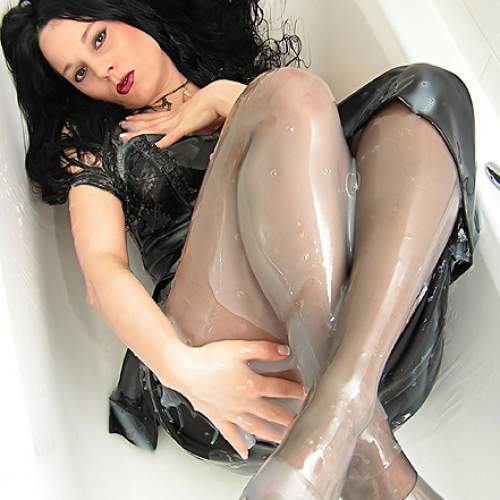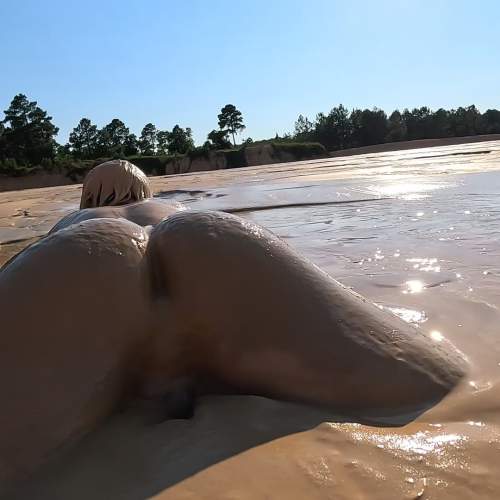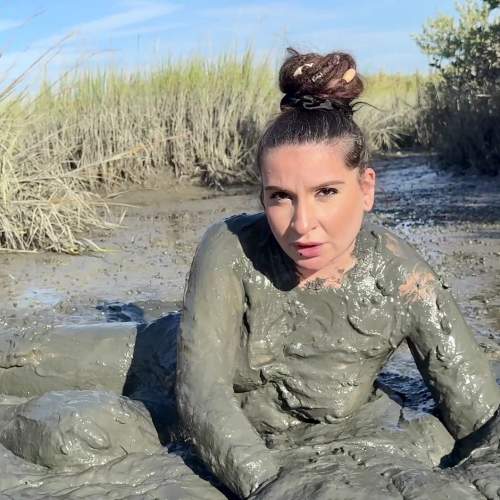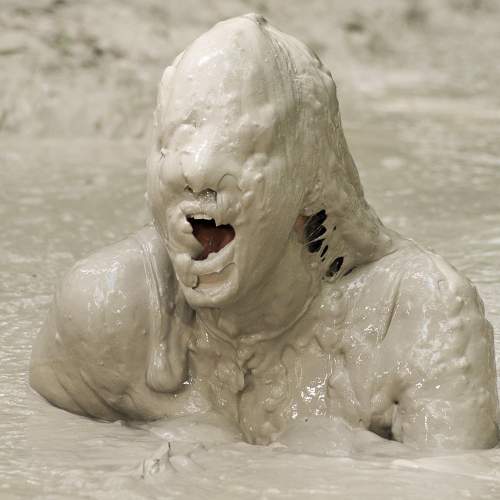|
|
|||
| forums: groups: | |||
|
"How to make a mud pit?"
I'm wondering how I could make a mud pit. One that's not too deep, maybe only a foot or so. And are there any ways to change the color of the mud, like certain types of dirt?
I'm leaving out some details but you can probably figure it out. Experience is a great teacher -
Dig a hole about the size of a large bathtub
Line it with a heavy tarp
Get six 20 kg bags of pottery clay from a ceramic or art supply store
Mix the clay to desired thickness in a wheelbarrow and dump it in. Use concrete dye to change the color as you mix it.
Get a 4x8 sheet of pressure treated plywood to cover it when not in use. Take care of it and it will last about as long as you will.
Dig a hole about the size of a large bathtub
Line it with a heavy tarp
Get six 20 kg bags of pottery clay from a ceramic or art supply store
Mix the clay to desired thickness in a wheelbarrow and dump it in. Use concrete dye to change the color as you mix it.
Get a 4x8 sheet of pressure treated plywood to cover it when not in use. Take care of it and it will last about as long as you will.
Dirty Job but I got to do it 20+ years. Thanks.
Occasionally add salt to keep weird shit from growing/living in it too right?
He's more potato now than man. Twisted and evil.
or get half a dozen straw bales, make them into a rectangle or square, line those with a tarp, above ground, saves a lot of digging.
Topcattopone said: or get half a dozen straw bales, make them into a rectangle or square, line those with a tarp, above ground, saves a lot of digging.
That's a good one too but if you want it to last that hole is hard to beat and straw bales do attract critters. Around here you are virtually guaranteed to have a wasp nest under that tarp before long. There is of course another option that avoids digging. Visit a junk yard, salvage store, used building materials place, and get an old bathtub. An old steel enamel bathtub is good for decades. A modern fiberglass tub is much lighter so it's easy for a skinny dork like me to handle solo. You can frame up whatever you want around it and make it look kind of like it belongs.
Dirty Job but I got to do it 20+ years. Thanks.
Its all personal taste of course, but I'd find a bath tub too small for me! No room to thrash and squirm around. With a liner you can tailor it to whatever size you want. Potting clay is amazing stuff but very expensive; cheaper if you bulk buy. The other option is top soil. You can buy it by the bag in garden centres.
DuncanEdwards said:
Nope. Clay is anaerobic There's no oxygen in it to grow anything. Might add a touch of chlorine bleach to the top once a year.
Potatoman-J said: Occasionally add salt to keep weird shit from growing/living in it too right?
Nope. Clay is anaerobic There's no oxygen in it to grow anything. Might add a touch of chlorine bleach to the top once a year.
Not sure about clay but there are plenty of anaerobic bacteria so could be worth a check to see if any of them can grow.
Silver_sea said:
Not sure about clay but there are plenty of anaerobic bacteria so could be worth a check to see if any of them can grow.
DuncanEdwards said:
Nope. Clay is anaerobic There's no oxygen in it to grow anything. Might add a touch of chlorine bleach to the top once a year.
Potatoman-J said: Occasionally add salt to keep weird shit from growing/living in it too right?
Nope. Clay is anaerobic There's no oxygen in it to grow anything. Might add a touch of chlorine bleach to the top once a year.
Not sure about clay but there are plenty of anaerobic bacteria so could be worth a check to see if any of them can grow.
I"m not sure how you could check that. Based on personal experience with far larger quantities of natural and man-made clay that's been in one place up to 15 years filled with naked ladies in sub-tropical environment you don't have much to worry about.
Dirty Job but I got to do it 20+ years. Thanks.
Silver_sea said:
Not sure about clay but there are plenty of anaerobic bacteria so could be worth a check to see if any of them can grow.
DuncanEdwards said:
Nope. Clay is anaerobic There's no oxygen in it to grow anything. Might add a touch of chlorine bleach to the top once a year.
Potatoman-J said: Occasionally add salt to keep weird shit from growing/living in it too right?
Nope. Clay is anaerobic There's no oxygen in it to grow anything. Might add a touch of chlorine bleach to the top once a year.
Not sure about clay but there are plenty of anaerobic bacteria so could be worth a check to see if any of them can grow.
I presume that pottery clay doesn't have enough organic material in it to sustain those anaerobic bacteria. It's those that are responsible for the black colour and smelliness of bogs, marshes and mudflats, and I'd guess that salt doesn't affect them so much, as tidal mud can have that in abundance!
Sponsors
To avoid content being blocked due to your local laws, please verify your age ?
Sponsors

Design & Code ©1998-2025 Loverbuns, LLC 18 U.S.C. 2257 Record-Keeping Requirements Compliance Statement
Epoch Billing Support Log In





 Love you, too
Love you, too












































